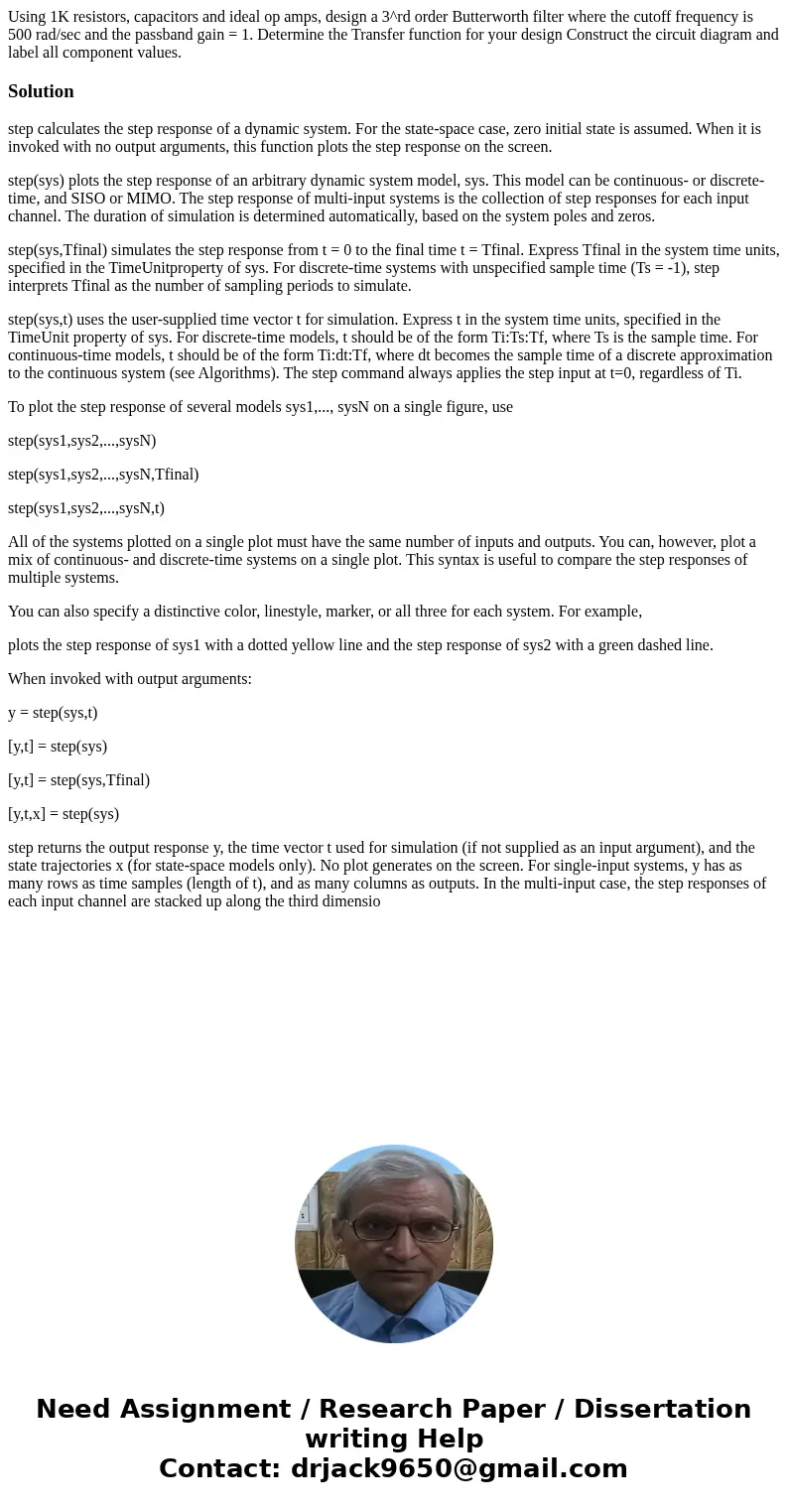Using 1K resistors capacitors and ideal op amps design a 3rd
Solution
step calculates the step response of a dynamic system. For the state-space case, zero initial state is assumed. When it is invoked with no output arguments, this function plots the step response on the screen.
step(sys) plots the step response of an arbitrary dynamic system model, sys. This model can be continuous- or discrete-time, and SISO or MIMO. The step response of multi-input systems is the collection of step responses for each input channel. The duration of simulation is determined automatically, based on the system poles and zeros.
step(sys,Tfinal) simulates the step response from t = 0 to the final time t = Tfinal. Express Tfinal in the system time units, specified in the TimeUnitproperty of sys. For discrete-time systems with unspecified sample time (Ts = -1), step interprets Tfinal as the number of sampling periods to simulate.
step(sys,t) uses the user-supplied time vector t for simulation. Express t in the system time units, specified in the TimeUnit property of sys. For discrete-time models, t should be of the form Ti:Ts:Tf, where Ts is the sample time. For continuous-time models, t should be of the form Ti:dt:Tf, where dt becomes the sample time of a discrete approximation to the continuous system (see Algorithms). The step command always applies the step input at t=0, regardless of Ti.
To plot the step response of several models sys1,..., sysN on a single figure, use
step(sys1,sys2,...,sysN)
step(sys1,sys2,...,sysN,Tfinal)
step(sys1,sys2,...,sysN,t)
All of the systems plotted on a single plot must have the same number of inputs and outputs. You can, however, plot a mix of continuous- and discrete-time systems on a single plot. This syntax is useful to compare the step responses of multiple systems.
You can also specify a distinctive color, linestyle, marker, or all three for each system. For example,
plots the step response of sys1 with a dotted yellow line and the step response of sys2 with a green dashed line.
When invoked with output arguments:
y = step(sys,t)
[y,t] = step(sys)
[y,t] = step(sys,Tfinal)
[y,t,x] = step(sys)
step returns the output response y, the time vector t used for simulation (if not supplied as an input argument), and the state trajectories x (for state-space models only). No plot generates on the screen. For single-input systems, y has as many rows as time samples (length of t), and as many columns as outputs. In the multi-input case, the step responses of each input channel are stacked up along the third dimensio

 Homework Sourse
Homework Sourse